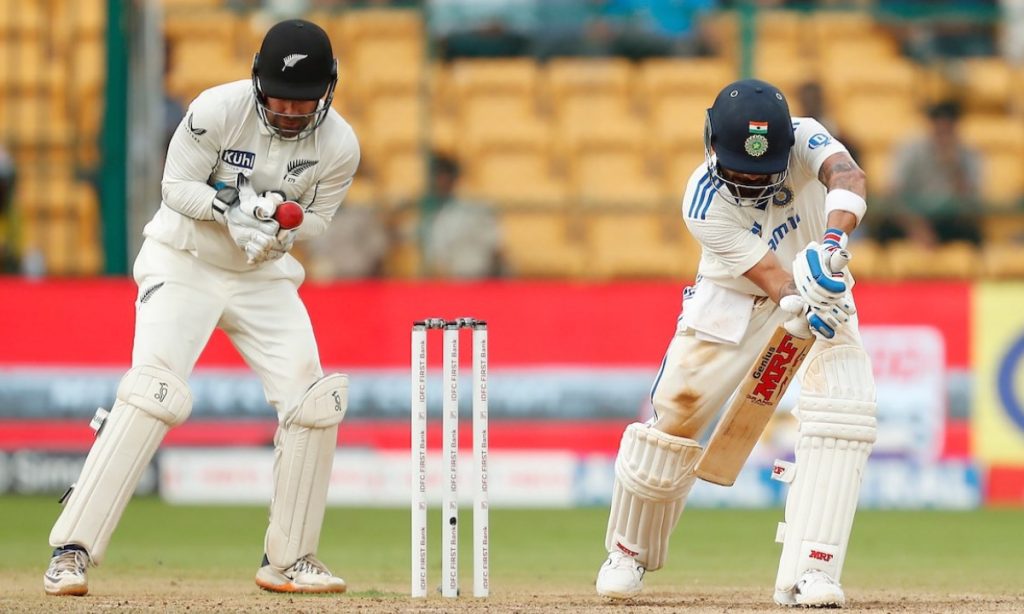In the 22 yards, few moments encapsulate the drama and intensity of the sport like the fall of a key wicket, especially when it’s that of Virat Kohli. In a Test match that will be remembered for years, New Zealand not only defeated India by 8 wickets but did so in a manner that underlined the strategic importance of Kohli’s wicket. Glenn Phillips, reflecting on the match, succinctly captured the moment’s essence by stating, “Virat Kohli’s wicket is one of the biggest wickets in world cricket currently.”
The match, held under the backdrop of Bengaluru’s M. Chinnaswamy Stadium, was not just a contest of bat and ball but a narrative of resilience, strategy, and the sheer weight of expectations. Virat Kohli, known for his ability to anchor innings and turn games single-handedly, was the linchpin for India’s hopes. His dismissal, just before the last ball of the stumps, was not just a loss of a wicket; it was a psychological blow to India’s campaign.
Virat Kohli, who had earlier in the match scored a crucial 70, was looking to build on that momentum. His partnership with Sarfaraz Khan had given India a semblance of fightback after a disastrous first innings. However, as the shadows lengthened on that final day, Glenn Phillips, with a delivery that seemed to have destiny written all over it, found Kohli’s edge, leading to his dismissal. This moment was more than just a wicket falling; it was a turning point in the match, signaling the beginning of the end for India’s resistance.
New Zealand’s victory by 8 wickets was not just a testament to their bowling and batting prowess but also highlighted their tactical acumen. The dismissal of Kohli, especially in the manner it occurred, was a strategic masterstroke. It not only broke the backbone of India’s batting but also lifted the spirits of the New Zealand team, who sensed blood and went on to clinch the match with an air of inevitability.
Phillips’ comment post-match wasn’t just a nod to Kohli’s stature in cricket but also an acknowledgment of the psychological warfare that is as much a part of Test cricket as the physical contest. Kohli’s wicket, at that juncture, was more than just the loss of a batsman; it was the disruption of India’s rhythm, the snuffing out of their fightback, and a clear signal to New Zealand that victory was within grasp.
The aftermath of Kohli’s dismissal saw India’s batting crumble, unable to muster the resilience needed against a rejuvenated New Zealand attack. The Kiwis, with a blend of aggression and precision, chased down the target with an ease that belied the tension of the match. This victory wasn’t just about numbers on the scoreboard; it was a narrative of how one wicket, especially Kohli’s, could shift the momentum in Test cricket.
This match will be remembered not just for New Zealand’s historic win but for the moment Kohli walked back to the pavilion, a moment that encapsulated the highs and lows of cricket. Phillips’ words, echoing the sentiment of many in the cricketing world, highlighted Kohli’s importance not just as a player but as a symbol of resistance and resilience in cricket. His dismissal was a reminder of cricket’s unpredictability, where even the biggest names can fall, turning matches on their head.

